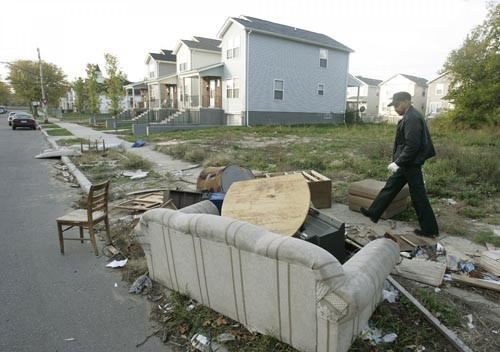Detroit, Michigan: Crippled and Paralyzed by the Recession

Detroit, Michigan -- the city where President Barack Obama will deliver his Labor Day speech on job growth -- may be the ‘poster child’ for the decline of American industry and entrenched poverty and unemployment.
Once the capital of the U.S. auto industry, which almost single-handedly helped to create the American middle-class, Detroit has been crippled by the closing of factories, falling home prices, the exodus of tens of thousands of residents, rampant violent crime and massive poverty.
The recession started early in Detroit and is likely to extend well beyond its end, given its unenviable lack of diverse industries and paucity of skilled laborers.
While the nation’s unemployment rate has remained around the 9.0 percent level for months – the jobless rate in the six-county Detroit metropolitan area was at 11.6 percent as of May 2011. For the city itself, the unemployment rate was 20 percent – although, unofficially, that figure could be much higher given the vast numbers of people who have probably stopped looking for work.
Indeed, in December 2009, an article in the Detroit News suggested the true unemployment figure in the city might be as high as an astounding 50 percent.
According to a recent report in the Detroit Free Press, 235,000 residents of Michigan have been out of work from more than half-a-year (more than two years after the official end of the recession).
Long-term unemployment is the distinguishing characteristic of this recession, George Wentworth, senior staff attorney at the National Employment Law Project, a research and advocacy organization, told the Free Press.
In a report on UrbanLand.com, author Jim Miarra wrote: “What is happening in Detroit, if not completely unprecedented, is of a magnitude seldom seen in urban history. No Major American city equaled Detroit’s near-total reliance on one economic engine -- the automobile industry -- and in no city has the loss of that economic support been as eviscerating.”
In tandem with the decline of manufacturing in the city, there has been a reduction in union jobs – once a mainstay of the local economy. According to local media, Michigan’s state workforce has been reduced by 25 percent over the past two decades.
Still, the public sector remains the area’s top employer.
According to Crain’s Detroit Business, as of November 2010, the city’s five top employers were the Detroit Public School system; the City of Detroit; the Detroit Medical Center; the Henry Ford Health System (a non-profit, managed care health care organization); and the U.S. government.
General Motors ranked a distance ninth.
As recently as 2007, according to Crain’s, the city three biggest employers were Ford Motor, GM and Chrysler.
The state of Michigan as a whole, like its neighbors Ohio and Wisconsin, is also facing a budget deficit, leading the governor to seek spending cuts. Rick Snyder, a Republican, wants Michigan's 35,000 unionized public sector workers to accept $145 million in concessions to avoid layoffs.
More alarming, Detroit is running out of people.
In 1950, while the auto industry ruled the economy like a colossus, the city had 1.85-million people (an all-time peak). By 2010, that figure has plunged to about 714,000. Between 2000 and 2010, Detroit lost an amazing 25 percent of its population.
Almost a quarter (23 percent) of the city’s housing units are unoccupied.
The jobs crisis in Detroit is unlikely to ease for at least another decade.
According to a report released in late June of this year, by IHS Global Insights, in cooperation with The U.S. Conference of Mayors and The Council for the New American, the metropolitan Detroit area lost 323,400 jobs in the past decade. The area is unlikely to return to its pre-recession peak employment level until at least the year 2020.
© Copyright IBTimes 2024. All rights reserved.




















